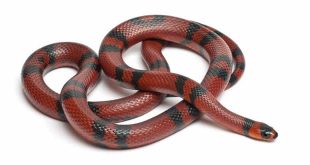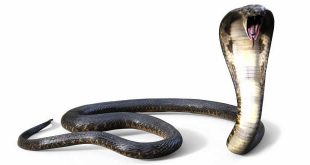 Sidewinder — Crotalus (Sidewinder) cerastes is a venomous pitviper species found in the desert regions of the southwestern United States and northwestern Mexico. Three subspecies are currently recognized, including the typical form described here.
Sidewinder — Crotalus (Sidewinder) cerastes is a venomous pitviper species found in the desert regions of the southwestern United States and northwestern Mexico. Three subspecies are currently recognized, including the typical form described here.
A small species, with adult specimens measuring between 43 cm and 76 cm in length. According to Campbell and Lamar (2004), most adults are 50-80 cm in length. The females are larger than the males, which is unusual for this group of snakes.
Midbody there are usually 21 rows of keeled dorsal scales. In males there 141 ventral scales or less; in females 144 or less. Sometimes referred to as the horned rattlesnake because of the raised supraocular scales above its eyes. This adaptation may help shade the eyes or prevent sand drifting over them as the snake lies almost buried in the sand.
The color pattern consists of a ground color that may be cream, buff, yellowish brown, pink or ash gray, overlaid with 28-47 dorsal blotches that are subrhombic or subelliptical. In the nominate subspecies, the belly is white and the proximal lobe of the rattle is brown in adults. Klauber and Neill describe the ability of this species to display different coloration depending on the temperature — a process known as metachrosis.
The common name sidewinder is an allusion to its unusual form of locomotion, which is thought to give it traction on windblown desert sand, but this peculiar locomotor specialization is used on any substrate that the sidewinder can move over rapidly. As its body progresses over loose sand, it forms a letter-J shaped impression, with the tip of the hook pointing in the direction of travel. Sidewinding is also the primary mode of locomotion in other desert sand dwellers, such as the horned adder (Bitis caudalis) and Peringuey’s adder (Bitis peringueyi), but many other snakes can assume this form of locomotion when on slick substrates (e.g., mud flats).
The species is nocturnal during hot months and diurnal during the cooler months of its activity period, which is roughly from March to November (probably longer in the southern part of its range).
 Kids Portal For Parents India Kids Network
Kids Portal For Parents India Kids Network


